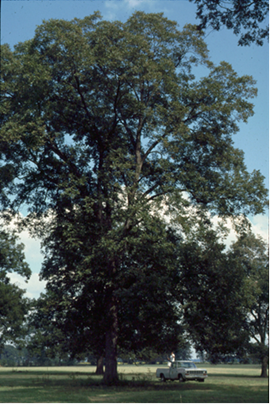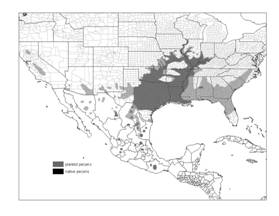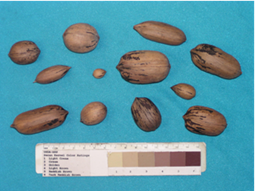Introduction to Symposium
Pecan [Carya illinoinensis (Wangenh.) K. Koch] is a tree species native to North America.
 |
 |
 |
In addition to being a majestic and ecologically important resident of the landscape, it is the most economically valuable member of the Carya genus. It produces nutritious nuts that command increasing domestic and international markets and have proven benefit for health. The development of regionally adapted pecan cultivars is the goal of national, state and international breeding programs. Although pecan culture is well documented with colorful and regionally distinctive histories, the crop is still in the early stages of domestication. The first successful propagation by grafting occurred less than 180 years ago, within the life-span of these long-lived perennial trees. The successes of improved cultivar selection that have fueled the growth of the US pecan industry have been accompanied by a decline in native pecan acreage, eroding the genetic base upon which crop development depends and potentially obscuring the record of adaptation that survives in native populations. The economic and nutritional incentives offered by pecan culture have resulted in rapidly developing international pecan industries. The export of this wind-pollinated tree species to other countries with native Carya species raises questions of the impact this may have on the population dynamics of species we know little about. This is an appropriate time to critically assess what we know about this important North American tree crop in order to strategically prepare for its future development globally and to conserve the valuable genetic foundations of pecan and its congeners.




